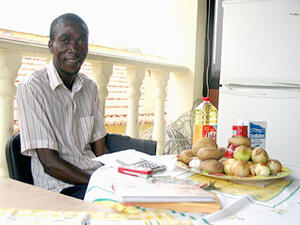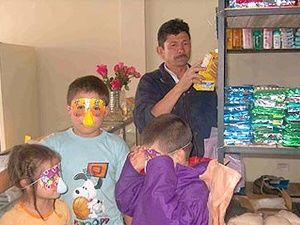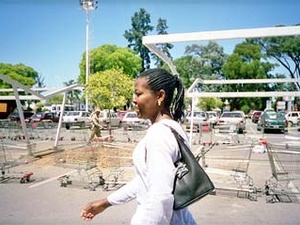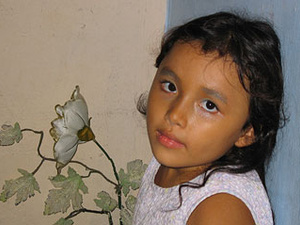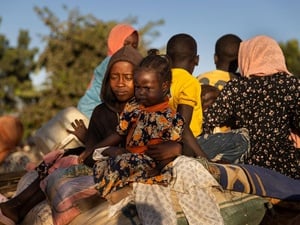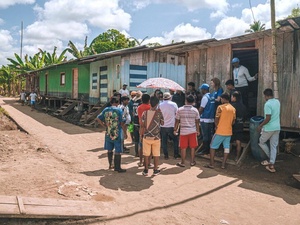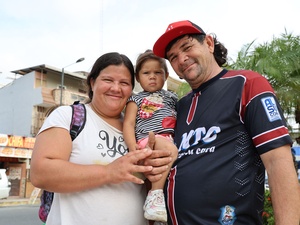Helping the hidden refugees in Panama
Helping the hidden refugees in Panama
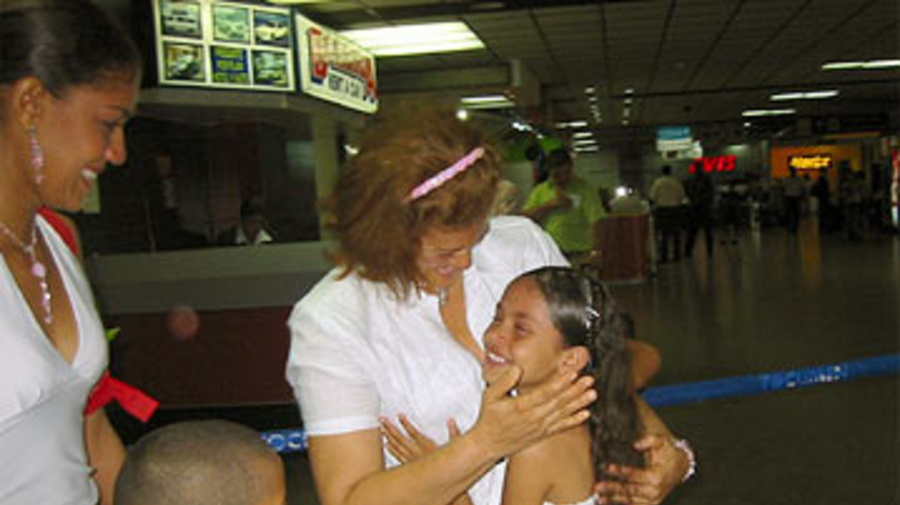
After a two-year separation, Colombian refugee Matilde is finally reunited with her 8-year-old daughter at Panama City Airport.
PANAMA CITY, October 17 (UNHCR) - It took Matilde* a whole year in Panama before she realized that she was a refugee. For almost a decade, she had lived on the run - first within her own country, moving from one Colombian city to the next - then across the border in Panama. In all that time, she had never thought of herself as a refugee, only as a woman who was trying to survive and save her children's lives.
Matilde's quest for a safe haven began ten years ago, when she boarded a taxi in the middle of the night and left behind the life she had always known. A former city councillor in northern Colombia, she had refused to make deals with the illegal armed groups operating in the region. This was enough to make her a target.
At first, she ignored the death threats. But it was impossible to ignore the actual deaths of friends and colleagues, brutally murdered one by one by the armed groups. She fled first to a nearby town, then to the regional capital, Baranquilla.
But the threats continued, and for eight years Matilde had to keep moving. Her family split in stages: her first husband left; her eldest daughter remained in Baranquilla. Wherever she went, it was only a matter of time before her tormentors would find her.
"Everywhere I went, I was scared," Matilde recalled. "When I was on the streets, I was scared to be stopped by members of armed groups. When I was home, I was terrified they would break in. Always, sometimes after months, sometimes years, they would find me and the threats would come."
Despite the strain of having constantly to look over her shoulder, she managed to start a new relationship, which produced her youngest child, a little girl called Socorro. But the girl's father soon left - he could not live a life of persistent fear, he said.
By July 2003, Matilde had had enough. With the help of friends, she bought a ticket for Panama. Despite being a victim of years of persecution, Matilde did not think of asking for the protection to which refugees are entitled. Like many Colombian refugees in neighbouring countries, she saw herself as an illegal migrant and had no idea of her rights.
The first year was very hard: long, bleak months of badly-paid menial jobs, shared rooms and fears for the future.
The worst aspect was the separation from her family, including six-year-old Socorro.
"I could not take her with me. I did not know how I would live when I first got to Panama," she remembered. "It was awful. I thought of her all the time. Only work, and thinking that if I worked hard enough I could bring her here, has given me the strength to go on."
Life took a turn for the better when, through a chance meeting in a restaurant where she worked, Matilde was put in touch with the UN refugee agency's office in Panama City, where staff helped her navigate the lengthy and complex procedure that led to her recognition as a refugee.
"It's a classic case," said Gonzalo Vargas Llosa, who was UNHCR Representative in Panama until last month. "Many Colombians come to Panama to escape the conflict in their country, but they do not know they have rights. They don't even try to register as asylum seekers. Yet they need documents in order to work, in order to just be able to stay in the country and to receive international protection."
Since its Panama office was opened in 2003, UNHCR has advocated for a simplification of the procedure to grant refugee status and deliver proper documentation to recognized asylum seekers. Although progress has been made, the process remains cumbersome, not least because refugee ID cards and work permits have to be renewed every year.
"This creates an element of uncertainty and instability in the lives of people who have already gone through traumatic events," said Vargas Llosa. "There are refugees who have been in this country for over twenty years, and who still can't get loans, can't buy property, because of this uncertainty."
There are 835 recognized refugees in Panama. Most of them are from El Salvador and Guatemala and have lived in their adopted country for decades. However, the vast majority of all new cases are from Colombia, and UNHCR believes that thousands of people may go unregistered every year.
"The main problem with Colombian refugees in neighbouring countries," said Philippe Lavanchy, Director of UNHCR's Bureau for the Americas, "is that very often they are invisible. It is true not just in Panama, but also in Ecuador and Venezuela. A big part of our work in these places is, therefore, to let these people know that protection is available, that they don't have to hide anymore."
Matilde is no longer in hiding. Now that she has her refugee ID card and work permit, she has obtained a micro-credit loan of US$ 450 from UNHCR and started a catering service for small businesses.
She is doing well - so well that at long last her number one dream has come true. Last month, after two years of waiting, she was reunited with her eight-year-old daughter Socorro. At Panama City airport, there were tears of joy when mother and daughter were finally able to embrace each other again.
"Now I've got her here, everything will be OK," Matilde managed to say, through her tears. "I have a house for her. I will send her to school. Life can start again."
* The names of Matilde and her daughter have been changed


